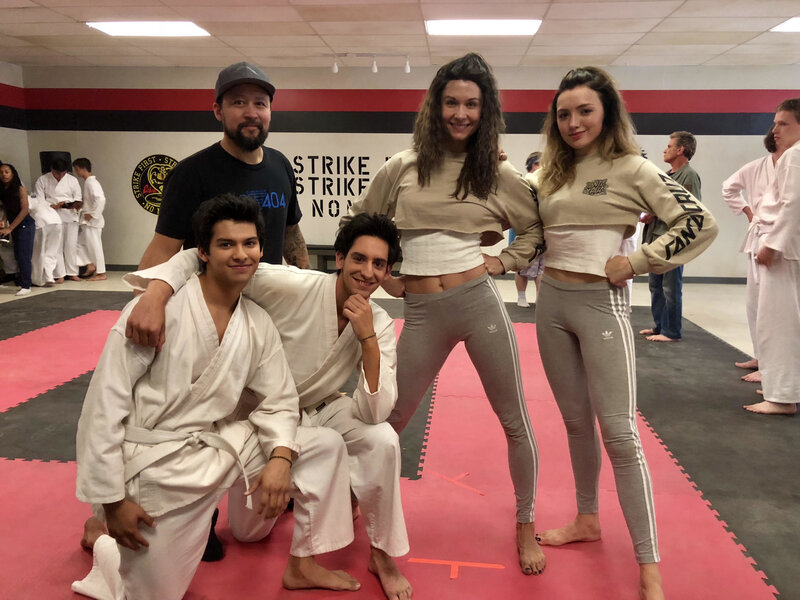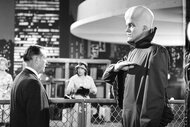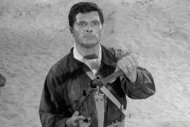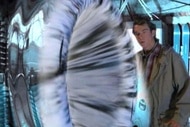Create a free profile to get unlimited access to exclusive videos, sweepstakes, and more!
Emmy Contender: The real martial arts and stunts behind Cobra Kai's biggest brawl
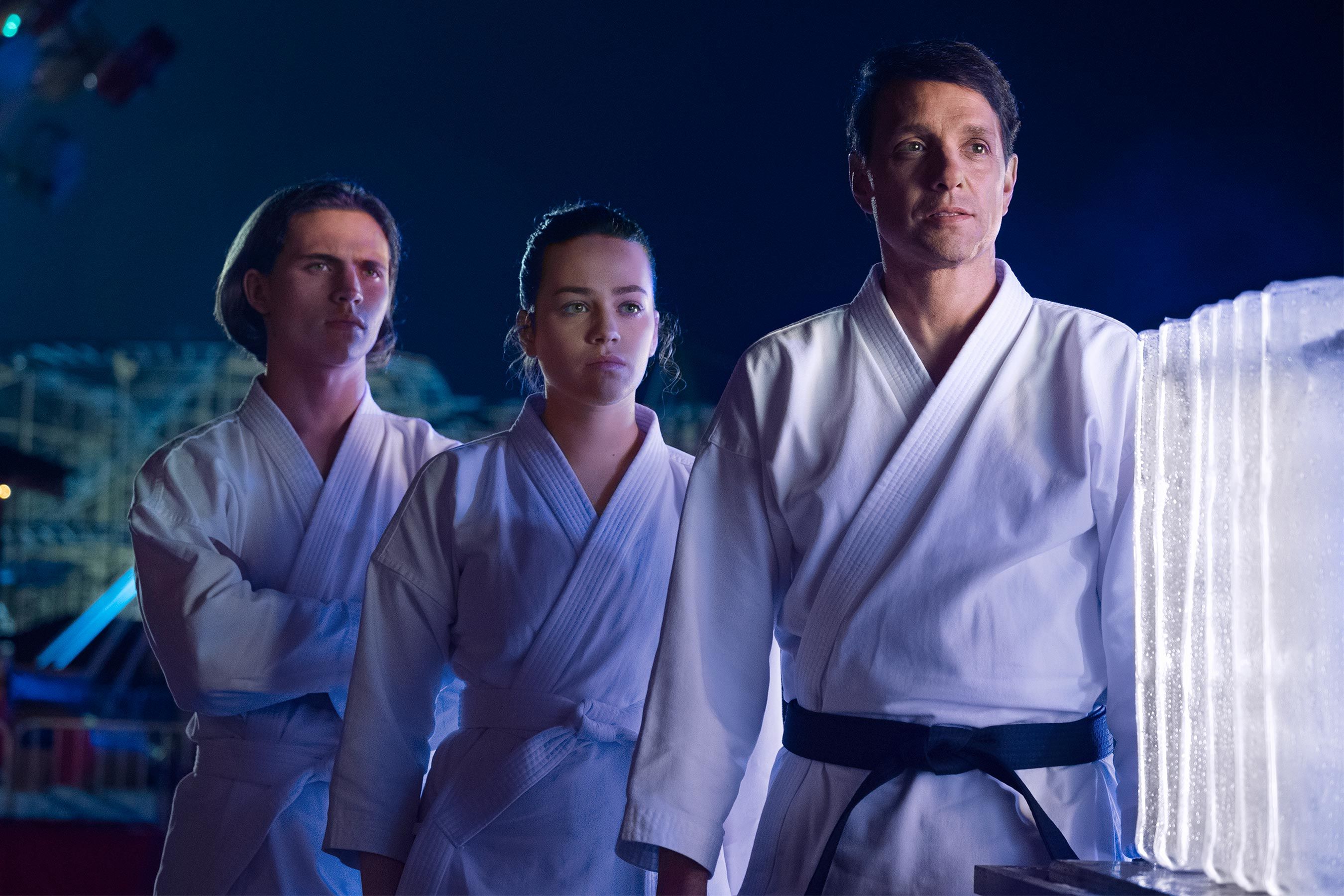
Welcome to Emmy Contenders 2019. This month, SYFY WIRE is speaking to a long list of actors, artists, and artisans whose work earned them Emmy nominations this year. Today we speak with Hiro Koda and Jahnel Curfman, the Emmy-nominated stunt coordinators for YouTube's Cobra Kai.
It's rare for a simple school fight to morph into an all-out brawl, but that's what happened in the season finale of YouTube Premium's Cobra Kai. First Tory took a swing at Samantha. Then Robby gave Tory a shove in response. And then Miguel — understandably confused about what was going on — took a running leap at Robby. And that was all it took. When Hawk shouted out, "It is on!" all the Miyagi-Do and Cobra Kai teens were swept up in a school-wide melee — demonstrating that even a little martial-arts knowledge can be a dangerous thing in the hands of immature kids.
Making sure that all the complicated action in this episode worked — without anyone getting killed, preferably — was the job of stunt coordinators Hiro Koda and Jahnel Curfman. SYFY WIRE asked the husband-and-wife team about their methods for creating maximum action, and they explained all.
You have a young cast with variable levels of martial arts proficiency. Xolo Maridueña, who plays Miguel, had minimal experience. Taylor Buchanan, who plays Robby, came in with a bit of taekwondo training. Jacob Bertrand, who plays Hawk, has a purple belt in karate. How does that affect how you plan a fight?
Curfman: Yeah. You know, we got to do a little bit more in Season 2, because at this point, all the kids have been taking and training in karate, even if most of the cast had little to no training coming into it. So it's actually been a natural progression of their skill and talent improving. At the beginning of the story, they had just started karate in real-life training, and their characters were just starting karate, so it's been nice that the training has paralleled the story in that sense.
Apparently, part of your method is that you shoot the fight choreography on a Steadicam and do previz for big sequences, as a way to work out the stunts and then show the actual Steadicam operator how to shoot them? How did that start? And how unique is that?
Koda: We shoot our own projects, and I do previz for especially big sequences like that fight. It's like a blueprint for when we go to shoot on the day. Back in the early 2000s, I interviewed for a job on the TV show Birds of Prey, which only lasted one season. They gave me a script, I picked one of the fights, I shot a previz with some friends, and I brought that into my job interview, which was back before previz was even a thing. The director on the pilot, Brian Robbins, later told me, "You're new to the business, your resume wasn't as good as some of the other people who came in here, but what got you the job was that previz. You shot the fight and it was like, 'This kid's got something new.'" It wasn't something they had seen before.
Now I feel like I'm one of the pioneers of creating previz for stunt coordinators, although it's becoming more of the norm. There are more people demanding them because they are very helpful and useful for the director. He can then make his notes and say, "This is what I liked. I don't like this. Get rid of this. Put this in," like that. Some people just shoot the sequence in wide shots, but I tend to shoot and edit it together so it looks more like the final sequence, and so you can get the feeling of what it's going to be like. And if there are any visual effects that need to be put into it, sometimes I do some visual effects on my own as well. Instead of saying, "Well, here's where this monster comes in," I will put something in there so they can kind of see it and understand.
So what's the process when you have a fight like this one? You had a total of four days, which is a big-time crunch.
Koda: Four days, but really three-and-a-half days, because they had a half-day of acting stuff too. What we pride ourselves on is really keeping the story flowing, and really trying to tell the story through action.
Curfman: We knew this one was going to be chaotic. We knew it was going to be very passionate. It was going to feel like a big prison brawl. Getting started is the hardest part. We start with the script, we break it down, we look at the characters who are fighting each other, and who has a different background or a different fighting style, and we start to get into it. The script is a map, but it's up to us to sort of fill in the ballet of choreography.
Koda: On Cobra Kai, they let us take the reins and run with it. When you're having a massive fight like this, it's not just dealing with what's happening in the foreground of what we're actually shooting. We always had to remember what was happening in the background, because all the kids were fighting.
Curfman: Sometimes the script will be specific with fight beats, and say, "He does a flying sidekick." But most of the time, it's not specific. It's just "Demetri and Hawk exchange blows, and Demetri gets the upper hand." So we know that Demetri needs to come up with some move to take Hawk out. Something else we think about when we're doing the choreography is what moves those characters would, or wouldn't, do. Would Daniel do this move? Is this something Johnny wouldn't do? It's those little details that help tell the story and help it make sense.
Let's talk about the one-er. That's about 85 seconds in one take.
Koda: When I was designing the shot, we built the skeleton for the fight, and we wanted it to play out for as long as it could until it kind of fell apart. There were moments where I was like, "Um, we can't have the cast do this. This is too dangerous. Let's figure out the best way to do a Texas switch."
Can you explain a Texas switch? And how many of them did you use in this fight sequence?
Koda: Basically, a Texas switch is when the actor is doing a scene, and as soon as they get to the point where action needs to happen, and they need to change out, rather than cutting, they pause and a stunt double quickly comes in and takes their spot. In older films, you can kind of see it when say, maybe a guy falls, and it's a body double, and then the actor stands up. That's a classic Texas switch.
Curfman: We had three quick Texas switches.
Koda: In the big one-er, that was 98 percent cast. Most of it was happening in-camera, so we didn't have to cut. It was just for camera moves when someone got knocked down, when we'd switch in the doubles to take the bigger falls. But it never looked like there was any cut, and the action continued all the way through. The whole point is to be clever so nobody can. Peyton List, who plays Tori, was switched out, and Jahnel doubled for Peyton. She did two of the Texas switches in there for Peyton, because she does a couple of big falls. She gets thrown to the floor, and the camera spins around Samantha, and as it comes back around, Peyton stands up in the shot after the throw.
Then when Miguel gets thrown against the locker, there was a quick Texas switch in there. And so we did that in the midst of Miguel and Robby fighting at the start of their fight. They're fighting, fighting, fighting, in the locker area, and Robby gets kicked back from Miguel, and the camera kind of goes with Robby and stays with him, so it loses Miguel for a second. That's the moment the first Texas switch happened. We pull back, and there's a bit of a fight that throws Miguel into a locker, and he hits the ground, and then we're off of that and into Tori and Samantha fighting. Miguel then switches back. Someone with an eagle eye might be able to spot all of this!
